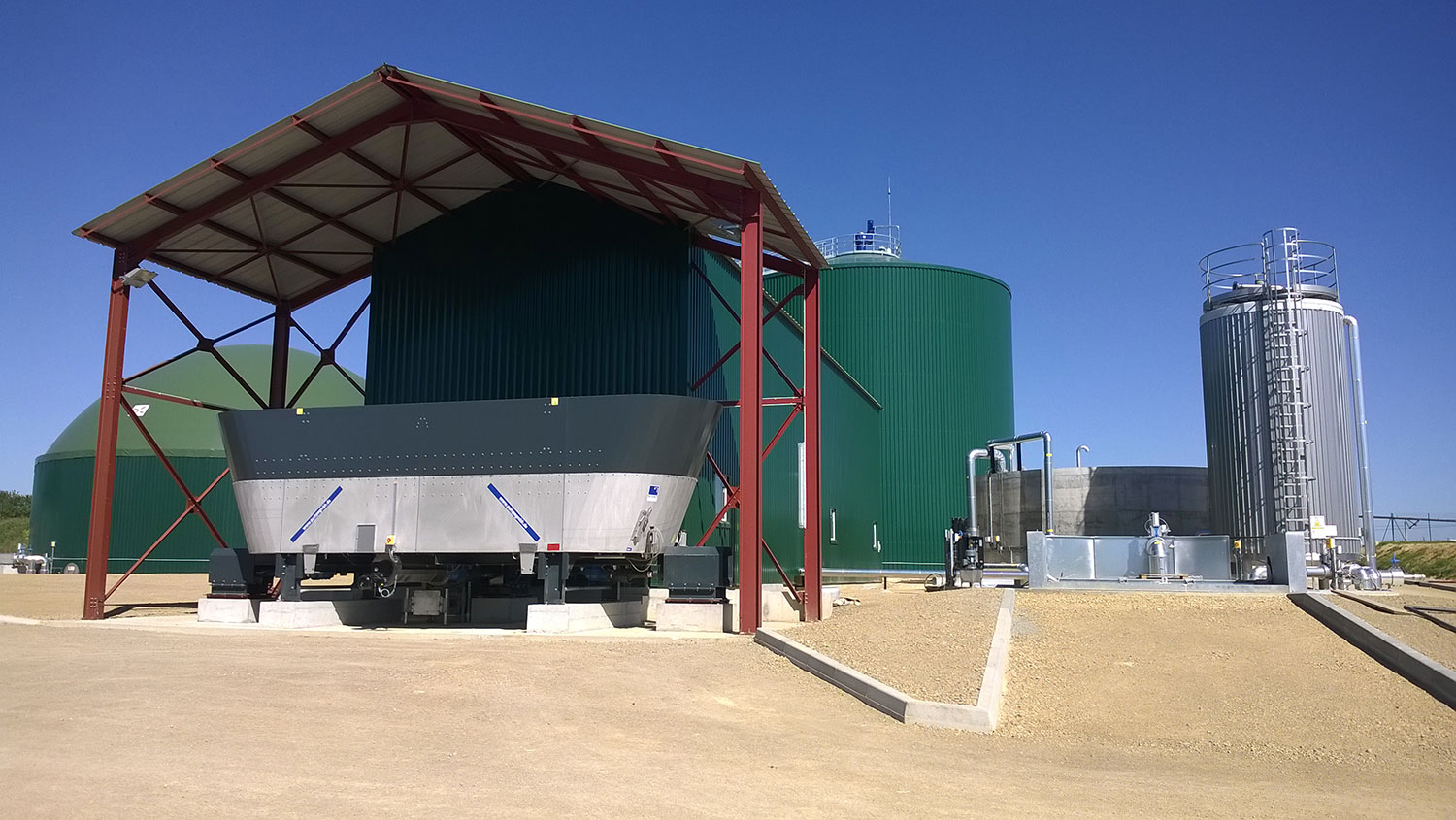Marnay Energie
Wine marcs recovery in the Sancerre region
Project description
 The Marnay anaerobic digestion unit is located in the Cher department, on the Marnay estate, a rural agricultural territory of the Sancerre region. The project originated from the desire of a visionary farmer concerned about his environment: when Matthieu Breusse took over the 450 hectare family grain farm of Moulin de Marnay in 2006, he thought anaerobic digestion was the most suitable solution to limit the mineral fertilisation of his crops, reduce his greenhouse gas emissions and energy bill, and reinforce the independence of his territory.
The Marnay anaerobic digestion unit is located in the Cher department, on the Marnay estate, a rural agricultural territory of the Sancerre region. The project originated from the desire of a visionary farmer concerned about his environment: when Matthieu Breusse took over the 450 hectare family grain farm of Moulin de Marnay in 2006, he thought anaerobic digestion was the most suitable solution to limit the mineral fertilisation of his crops, reduce his greenhouse gas emissions and energy bill, and reinforce the independence of his territory.
Thanks to the expertise of Evergaz and its consultancy firm, who provided support from the start, the anaerobic digestion unit by cogeneration was created in 2014: the biogas recovered is transformed into electricity which is reinjected into the grid. The heat recovered from cogeneration is partly used to supply the anaerobic digestion supply, while contributing to reducing propane consumption on the Moulin de Marnay farm.
The anaerobic digestion unit operated by Evergaz currently treats local agricultural and agri-food organic waste within a 30km radius, including Sancerre grape and wine marcs and distillation residue. Treatment capacity more than 36,000 metric tons of waste per year!
Key data:
- Cher (18)
- Treatment capacity: 36,500 metric tons per year
- 23,500 metric tons of agricultural by-products treated
- Biogas recovery: 1,067 kWel.
- Heat recovery: multi-product drying
- 3,589 metric tons of CO2 equivalent avoided
- Cogeneration making it possible to produce electricity and heat
- 22,800 metric tons of liquid digestate produced every year
- 6,400 metric tons of solid digestate every year
Evergaz's involvement:
- Project development
- Technical engineering
- Administrative and financial engineering
- Project management
- Equity investment
- Operation of the unit
Benefits:
- Treatment of local waste
- Production of organic fertilisers to replace chemical fertilisers
- Pollution reduction in sensitive wetlands (upstream of the River Loire)
- Reduction in the energy bill
- Reduction in the territory's energy dependency
- Creation of local jobs

>




